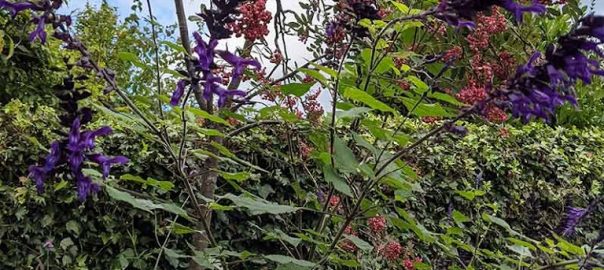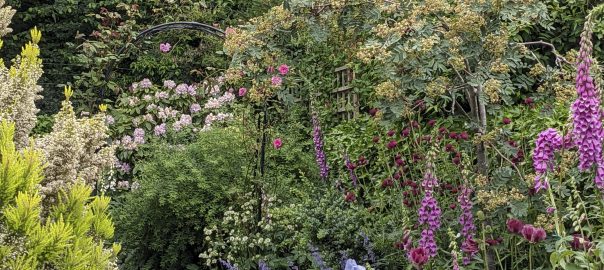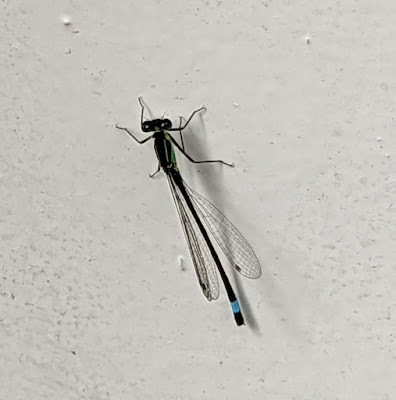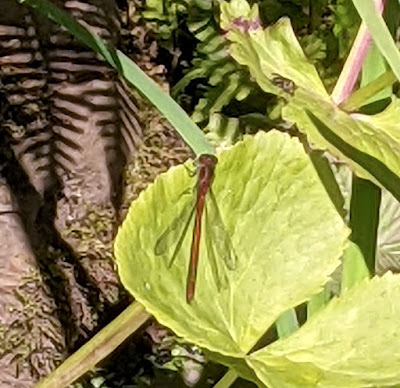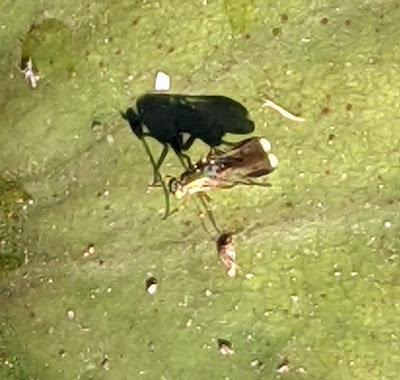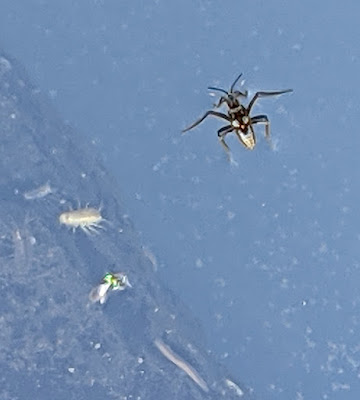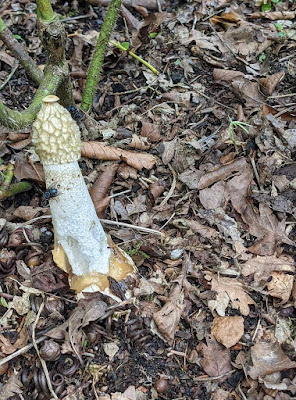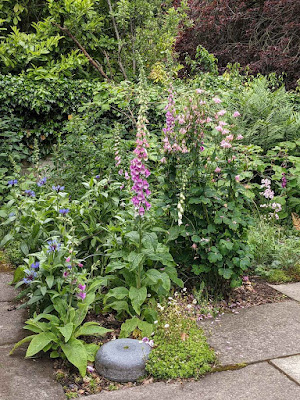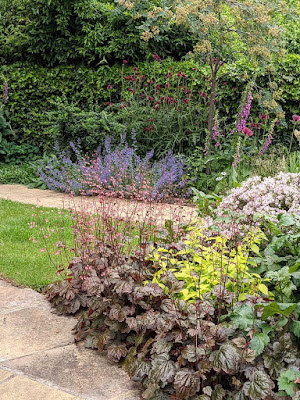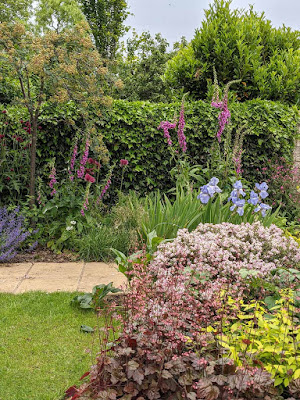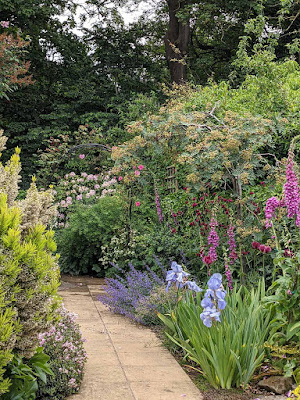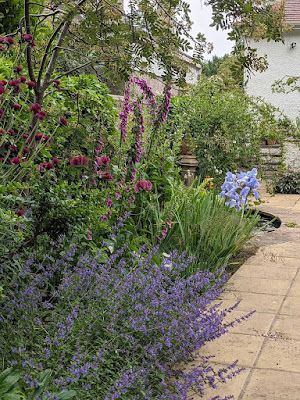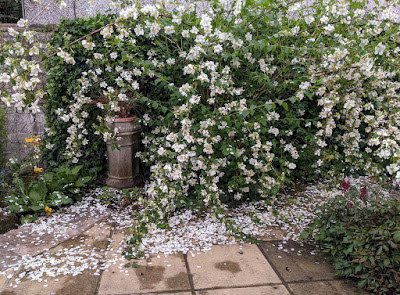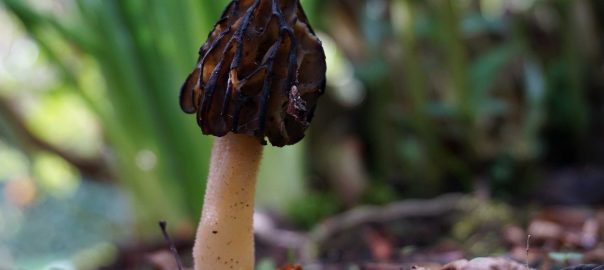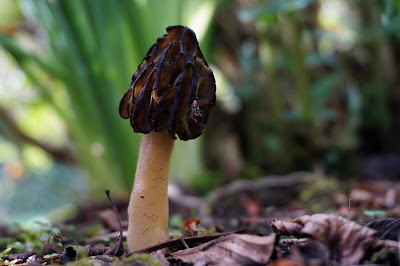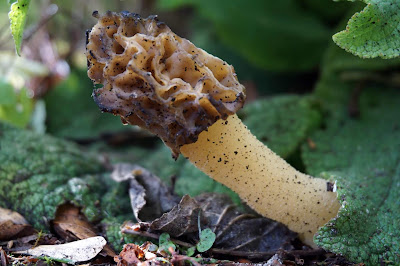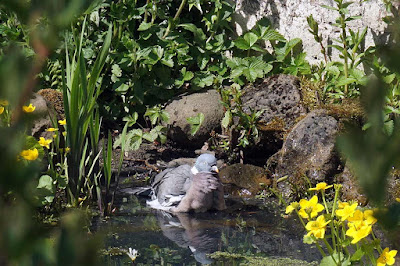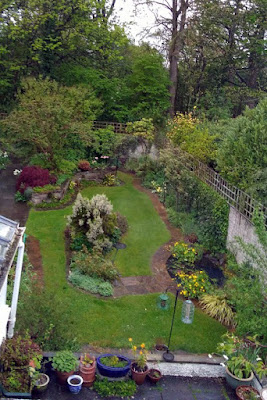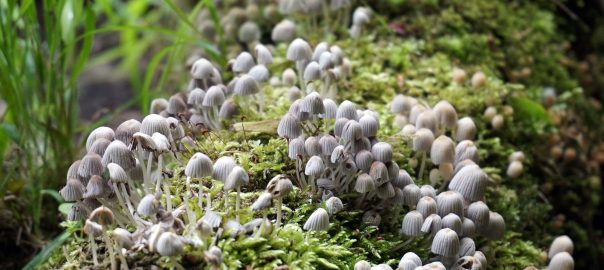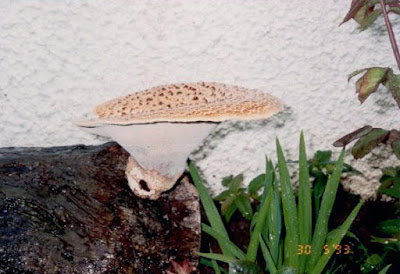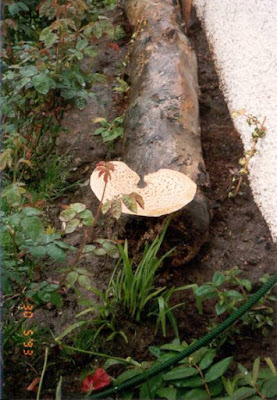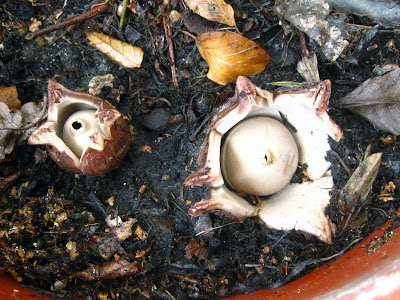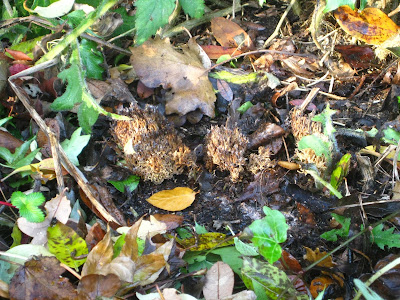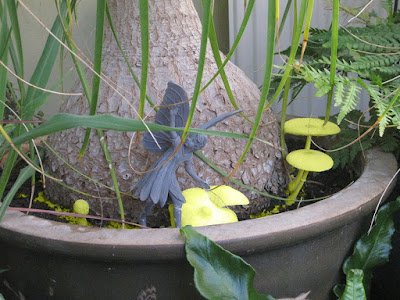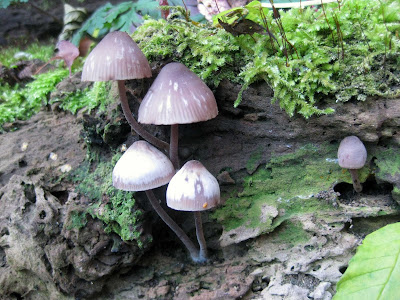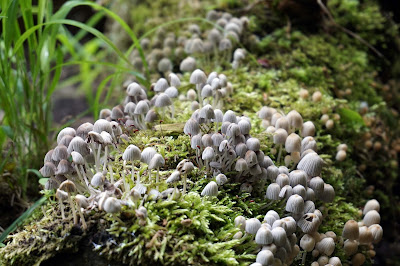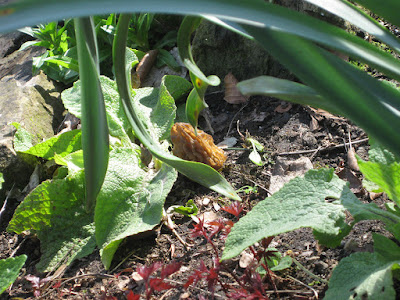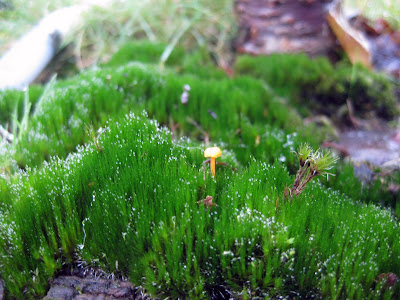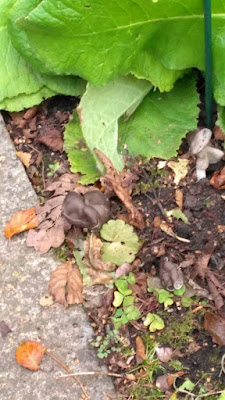Let’s start off with the weather again! October had lots of rain, and so has the beginning of November. I have had to move a lot of the cuttings, that were on the patio table, indoors to the conservatory as they were water-logged and had no chance of getting drier. Other plants are sheltering under the table and under the bench (with a cover over the bench seat).
The Japanese anemones are still looking good, and so is the salvia Amastad. A couple of the hellebores are doing well while other hellebores are struggling to get going. The cyclamen flowers are over but their foliage looks amazing and creates a lovely patterned carpet along the garage border.
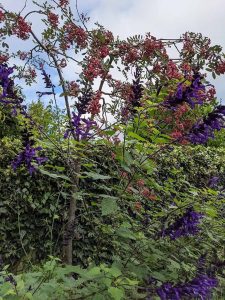 |
| Salvia Amistad and Rowan Pink pagoda |
Acer palmatum ‘Dissectum Garnet’ is putting on a fabulous show by changing it’s deep purpley/green foliage into bright red before losing it all. I tried to get a photo from inside the dome of the small tree.
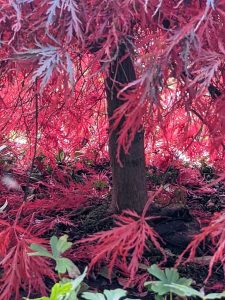 |
| Acer palmatum ‘Dissectum Garnet’ |
The view from the top of the ramp shows the continuation of the red theme in autumn, going from the persicaria amplex ‘Blackfield’ down to the acer then across to the deep pink berries of the rowan. If I had taken the photo from inside the conservatory I may have also got the indoor red cyclamen and a few of the red weigela ‘Bristol Ruby’ flowers too.
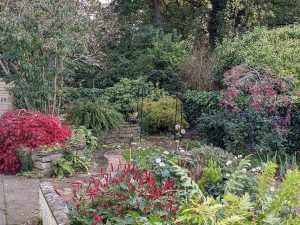 |
| view from the top of the ramp |
The earth-star fungi apparently pops up anywhere in the garden. It starts off looking like a bulb that someone has forgotten to plant, then it opens up to form a star shape with a little puffy ball in the centre. When it rains, the rain drops are heavy enough to dent the ball sending the spores out to start the cycle again. This looks like the collared earth star Geastrum triplex.
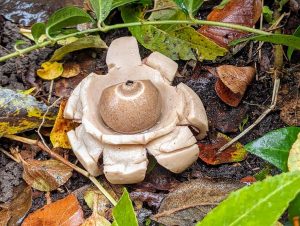 |
| Earth star fungi (Geastrum triplex) |
I am attempting to plant the awkward area at the far corner behind the garage. The ivy was a mess there so now there is a Hydrangea anomala petiolaris in it’s place, and in front of that, a Farfugium
japonicum ‘wavy gravy’. In amongst them Debs planted some yellow erythronium that she brought round. We also spotted some pink flowered persicaria that had popped up beside the deep red one, so we removed that and planted it next to the periwinkle. That should all fill that corner nicely.
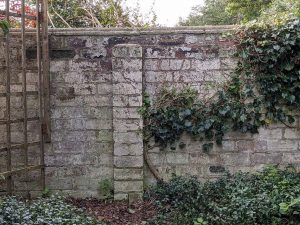 |
| corner with tatty old ivy |
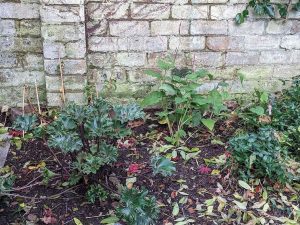 |
| corner with farfugium and climbing hydrangea |
I will finish with a gloriously coloured, fallen leaf from the witch hazel, Hamamelis
inter Diane.
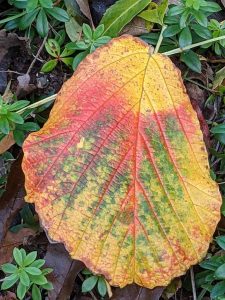 |
| Hamamelis inter Diane leaf |
